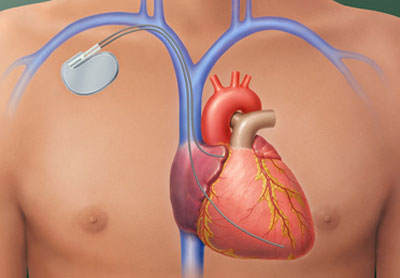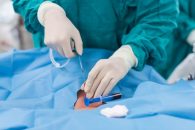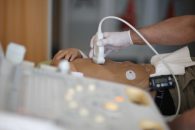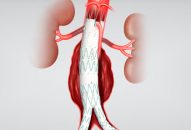Under much debate, the treatment of uncomplicated type B aortic dissection is still uncertain. Several studies with methodological limitations have shown that endovascular treatment plus optimal medical treatment might be beneficial, compared with medical treatment alone. This meta-analysis sought to define more clearly the treatment strategy in patients with acute and subacute uncomplicated type B…
Patients: What They Really Want to Know about Their Disease
When we decide that 30-day mortality to repair an abdominal aortic aneurysm (AAA) is at least twice as high with conventional surgery compared against endovascular treatment, many of us think choosing a strategy is far from hard, and recent stats show exactly that. However, are we sure our patient agrees with us, or at least…
Transcaval Access Is Safe in TAVR
Courtesy of Dr. Carlos Fava. One of the limitations to percutaneous interventions is poor or impossible femoral access. This happens especially in TAVR, with endoprosthesis or ventricular assistance devices, when the transcaval approach with cardiac occluder rises as a viable alternative. We have started to use it in TAVR, but at present there is little…
How Is Renal Function Affected by Endoprosthesis Implantation?
The occurrence of renal failure after any endovascular intervention is associated with increased morbility and mortality. After a coronary intervention (whether it be angioplasty or surgery), renal failure increases mortality 20-fold. Relatedly, surgical repair of an abdominal aortic aneurysm with renal failure is also associated with a significant increase in the number of events. Read…
Minimum Appropriate Follow-Up Reduces Mortality After Endoprosthesis Implantation
No study has been able to prove long-term benefit of regular imaging follow-up after abdominal aortic aneurysm repair by means of endoprosthesis implantation. This is important because the costs for these studies are high, which should be added to potential radiation and contrast morbidity. This work sought to characterize the association between post-endovascular abdominal aortic aneurysm…
AAA Screening in Men Over 65 Reduces Mortality
Systematic screening for abdominal aortic aneurysm (AAA) targeting all men over 65 years old (not just those presenting risk factors) was associated with a drop in the mortality rate specific for this disease, according to the Swedish Nationwide Screening Program. While 667 men were examined for AAA, the number of patients who required treatment to prevent…
TAAA: Better Outcomes with Renal Fenestration
Courtesy of Dr. Carlos Fava. Thoraco-abdominal aneurysms (TAAA) are a real challenge for surgeons. So far, endovascular repair have rendered good results in these aneurysms, but branch occlusion continues to be their Achilles’ heel”. 449 patients were analyzed, 235 (52%) were treated with branched devices (BEVAR) and 214 (48%) with fenestrated devices (FEVAR).…
FRONTIER II: One Year Outcomes of the New Vascular Closure Device
Original Title: 12-month results of a novel large access closure device: insights from the FRONTIER II Study. Presenter: Arne Schwindt The FRONTIER II trial assessed the safety and efficacy of the vessel closure device VIVASURE in more than 50 patients using the femoral access for TAVI or aortic endoprosthesis. Puncture site was assessed at…







